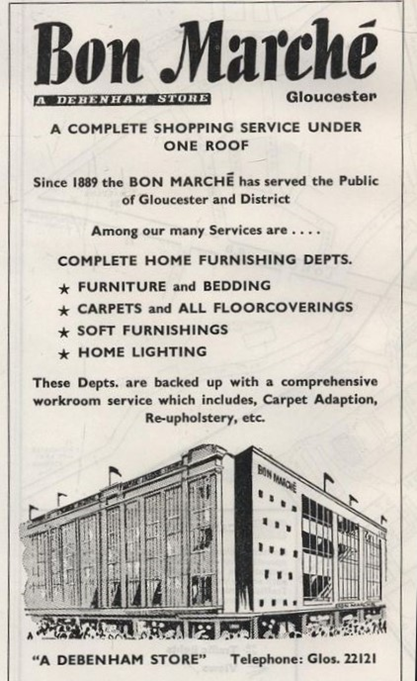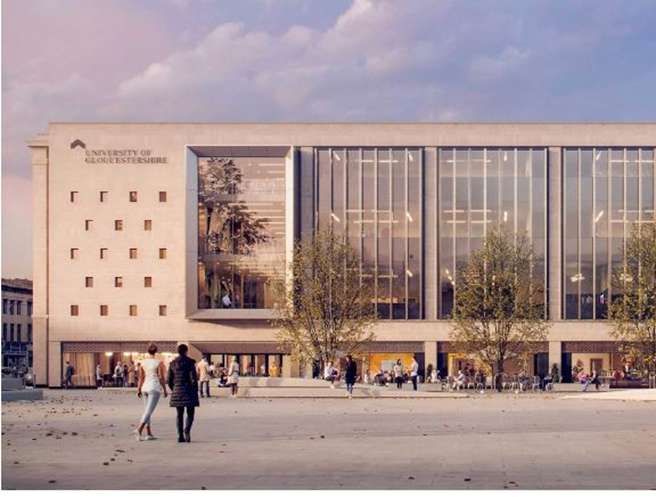Students explore the history of our City Campus building
From Department Store to City Campus: the story of the former Debenham’s building in Gloucester, told by #UniOfGlos students.
Undergraduate students studying History at the University are undertaking a number of local history projects in 2022. In this project, students delve into the history of our upcoming City Campus building.
Students Jack Eccles, Nathan Gathercole, Kacper Kwiecinski, and Sophie Phillips examine how the changing function of an important building can give an interesting insight into the city’s change over more than a century. The project is part of our longstanding partnership with the Gloucester History Festival and you can keep up with its development on the Cotswold Centre for History and Heritage’s blog.
Our project focuses on the links between the Gloucester community and the Debenham’s building as a retail commercial centre. The Debenham’s building is a testament to the growth of the retail economy in Gloucester and to its links with the local community.
Engraved on the Debenham’s building are the dates 1909 and 1914, which indicate the expansion of the building and also the growth of retail shopping in Gloucester. After the First World War, Gloucester city centre was seen as an area where the growth of the local economy could be further developed. In the 1920s, what is now Kings Square used to be King’s Street and St Aldridge Street. King’s Street is now Kings Walk. The city’s first department store, Bon Marche, owned by Drapery Trust, was opened on Northgate Street in 1889 by John Rowe Pope. In the late 1920s, a new building was constructed near the site of the original shop.
After the Second World War, large retail businesses opened in Gloucester, and these began to displace some of the existing local businesses. Kings Square became a retail centre to rival the city of Bristol. In 1971, the Bon Marche department store was sold to Debenham’s.

We’ve looked over a number of news articles, interviews, reports and business documents relating to the original building to establish the growth and success of the companies that were located inside it, from the original Bon Marche department store through to the renamed Debenham’s. The building is a perfect case study of the economic growth of Gloucester as a whole. Its rise signalled the coming of a commercial boom in the city, much like its later decline came to reflect the downturn of city centre retail in the early 21st century.
Did you know: that Over the lifetime of the project, the City Campus will add an estimated £86 million in Gross Value Added to Gloucester’s economy and more than 1,200 jobs.
The impact of the building can be seen beyond its economic function. It became a true hotspot for the community by offering space, being proactive and, more importantly, being creative in its engagement with the local population. Minute books show how the employees and management were committed to the idea that the building should serve as more than just a department store. It was also a communal space that hosted events, participated in parades, and did so by engaging the entire staff. This community outlook proved to be incredibly successful. Many people fondly recall their time spent at Debenham’s. In many ways, the picture we are drawing from our research can be compared to that of mall culture in North America during the 1980s.
It is both of these factors put together that give our project a critical understanding of how Debenham’s building was truly a crucial and important part of the city. Its evolution is closely tied to the development of Gloucester as a whole. This gives profound meaning to its legacy as the building is currently being remodelled as the University of Gloucestershire City Campus.

Our project aims to uncover and show these developments to a wider audience so that this building’s unique history can be shared and understood as we move into the next phase of Gloucester’s life.

; ?>)